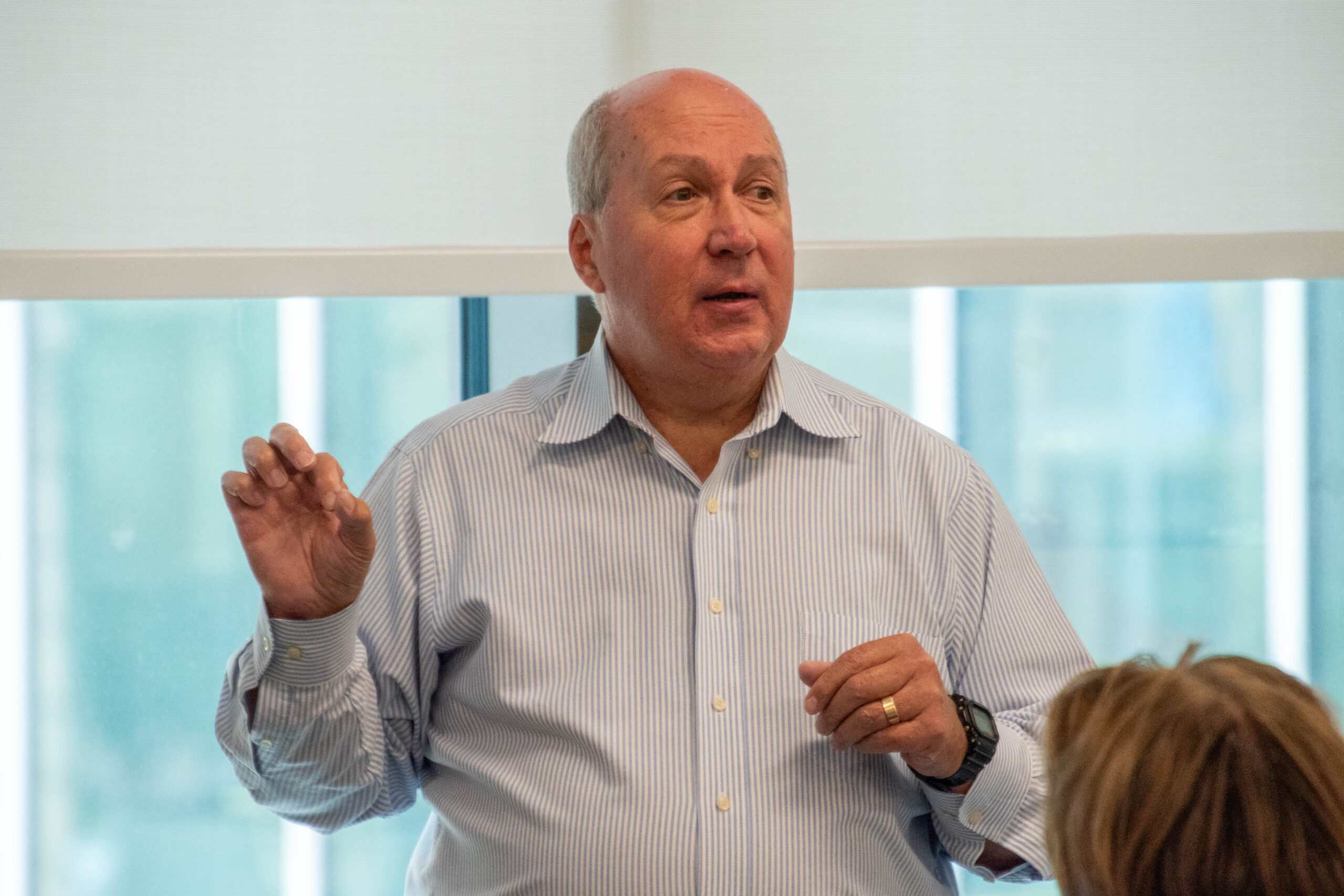World
USMNT, Canada and Mexico: How the 2026 World Cup hosts fared at Copa America

One semi-finalist, one team looking for a new coach after early elimination and one that scored just a single goal in an embarrassing group-stage exit.
Canada, the United States and Mexico — co-hosts of the 2026 World Cup — certainly had mixed fortunes at 2024 Copa America.
But with less than two years to go and no qualifying tournament to navigate, the trio have a paucity of opportunities to test themselves at a high level ahead of the first 48-team World Cup.
With that in mind, the 2024 Copa America was supposed to be a golden chance to size up the player pool and gauge each program’s readiness to compete in 2026.
For Canada, things could hardly have gone better, as Jesse Marsch’s side made a surprising run to the semi-finals and could yet end up finishing third if they beat Uruguay on Saturday.
For Mexico and the United States, however, failure to advance from their groups has left each team with more questions than answers — while the U.S. has already started another head coach search after firing Gregg Berhalter.
Our experts on each team looked at what went right (or wrong) for each nation at the Copa America. What can be done to remedy their shortcomings ahead of the World Cup?
USMNT — Paul Tenorio
What when right/wrong in the group?
Things turned from right to wrong around the 18th minute of the USMNT’s second group game, when referee Ivan Barton pulled out a red card and sent Tim Weah to the locker room.
Weah’s red card against Panama (Eduardo Munoz/AFP via Getty Images)
The U.S. had picked up three points in their group opener against Bolivia in an imperfect but ‘did-the-job’ 2-0 win over Bolivia. They were firmly in control of the game in the opening stages against Panama. Even a few minutes after Weah’s ejection, the U.S. scored. But Panama equalized four minutes after that and found a winner in the 83rd minute, and the U.S. suddenly was left scrambling.
A loss to Uruguay in the group finale eliminated the hosts and spotlighted the issues around a team that still struggles to score and still lacks a signature win against a top-tier opponent.
What can the team take away from the tournament?
The Copa was a massive disappointment for the U.S. It was supposed to serve as a dress rehearsal for the World Cup in two years, both from a sporting standpoint and also in generating excitement around the country behind this U.S. team. Instead, the U.S. had their worst tournament performance on home soil and now will have to figure out how to course correct without many competitive games between now and 2026.
How did the coach do?
The Copa America was the end of the road for Berhalter, who had become a lightning rod for criticism around the U.S. team.
Berhalter was criticized for his team playing too conservatively after Weah’s red card — which might be a bit unfair considering the circumstances — but also for being unable to push this U.S. team to another level since the 2022 World Cup (and since he took charge again last summer). Poor results against Trinidad and Panama in CONCACAF competition, a last-gasp win over Jamaica in the Nations League, losses to Germany and Colombia in friendlies and the Copa group exit added up to the end of Berhalter’s tenure as coach.

The Copa America was the end of the road for Berhalter (Shaun Clark/Getty Images)
What happens next?
Over to you, U.S. Soccer. Does the federation push for a big-name hire? Could they land on a coach like Patrick Vieira or Gareth Southgate? Will they opt for an American, like LAFC’s Steve Cherundolo? The core of this U.S. team has been together essentially since qualifying started for the 2022 World Cup. A full reset isn’t necessary, but a new voice would need to find a way to push this team to grow and improve if they want to advance deep into the World Cup in two years’ time.
Strengths
As a general rule, it’s reckless to make wholesale judgements off a 270-minute sample, particularly given the nature of international soccer. That said, each program will be desperate to advance from their World Cup groups in two years’ time — something that must be achieved in the confines of 270 minutes. So keep that lens in mind.
Although the United States only scored three goals and none after half-time of the second game against Panama, they consistently created dangerous chances. Only three teams averaged a higher xG per shot than their 0.12 — suggesting a 12 per cent historical likelihood that a chance would be converted. The other seven teams in the top half of the xG per shot rankings all advanced to the quarter-finals. The left side was particularly potent in build-up thanks to Antonee Robinson, Gio Reyna and Christian Pulisic.

While Pulisic’s corner kick goal in the opener was the obvious evidence, the United States was very good at drawing fouls. Berhalter’s side had the second-most fouls suffered per game (16.0), trailing only Costa Rica in that department. That frequency helped create many moments that either ended an opponent’s chance to build an attack or helped the USMNT create their own opportunities.
Jeff Rueter
Weaknesses
Weah drawing a red card meant the team had little to show for its right flank’s efforts, with Joe Scally failing to come close to replicating Sergino Dest’s impact at right-back. Even as Pulisic shifted right for the finale, Reyna struggled to make an impact throughout the tournament whether in midfield or on the wing.

The United States had the field’s third-worst PPDA (passes allowed per defensive action made), evidence of a languid defensive press. That may be due to losing the midfield battle, as only three teams averaged fewer possession wins in the middle third than the USMNT’s 15.7 per game. Every team that ranked below Berhalter’s side in these two categories also missed the knockouts.
Jeff Rueter
Mexico — Stuart James
What went right/wrong in the group?
Let’s start with a potential positive. Mexico only conceded one goal across three matches, which suggests their defence has improved — a point the coach Jaime Lozano made over and again in the wake of elimination.
The calibre of Mexico’s opponents, however, makes it hard to get carried away. Jamaica, Venezuela and Ecuador are not comparable to Brazil or Uruguay, who put a combined seven goals past Mexico on the eve of the Copa America. Would Mexico really be any better defensively if they played Brazil and Uruguay now?

Jaime Lozano and Luis Romo leave the field after Mexico’s elimination (Omar Vega/Getty Images)
At the other end of the pitch, Mexico lacked creativity and penetration. They scored only once in 270 minutes – a terrific shot from outside the penalty area by the left-back Gerardo Arteaga in the opening match against Jamaica – and there was a mixture of disappointment and frustration that Santiago Gimenez couldn’t reprise his prolific club form for Feyenoord in a Mexico shirt.
Generally, the quality of the service to Gimenez was poor but the 23-year-old could, and should, have scored against Venezuela on a night when Orbelin Pineda also missed a penalty. That 1-0 defeat in Los Angeles was the result that really did the damage for Mexico, who were also not helped by the hamstring injury that their captain Edson Alvarez suffered early on against Jamaica. It was that sort of tournament.
What can the team take away from the tournament?
Mexico’s talent pool has shrunk, they were well-beaten by the USMNT in March, Uruguay thrashed them 4-0 two weeks before the Copa America started, and Lozano left out four of the country’s most experienced players – Guillermo Ochoa, Raul Jimenez, Hirving ‘Chucky’ Lozano and Henry Martin. In other words, what did Mexican fans really expect?
That said, Mexico were drawn in the easiest of the four groups. They avoided Argentina, Brazil, Colombia and Uruguay, and were up against the only CONMEBOL nation (Venezuela) never to make it to a World Cup. Against that backdrop, finishing in the top two and qualifying for the quarter-finals didn’t feel like it should be that big an ask. The fact it was underlines just how far Mexico have fallen.
How did the coach do?
Not well enough is the simple answer. But if you believe the pre-tournament messaging from the Mexico Football Federation (FMF), Lozano’s position is secure until the end of the 2026 World Cup finals come what may. “We are two years away from our World Cup,” Mexico sporting director Duilio Davino said. “We have our spot secured and we want to take advantage of this great opportunity to not think about the immediacy of the result and project our path to 2026.”
It says everything that Lozano was asked repeatedly about his future during the Copa America, and that line of questioning will continue if, as expected, he remains in post. If the FMF did go back on their word now and make a change, they’d look rather silly. Equally, Lozano has a lot of work to do to convince the public that he’s the best man for the job – although there appears to be an acceptance that this is one of the weakest squads that Mexico have had for a long time. The question many people are asking is whether another coach would get more out of the same players.
What happens next?
In practical terms, Lozano has to submit a report to the FMF with his observations on the team’s performances at Copa America. That would make for interesting reading, albeit predictable in some respects: defensively sound; lack a goal threat.
Either way, it’s hard to see how Mexico can press the reset button and start over – they’ve just tried to do that. What next – go back to the past? Chucky Lozano will be only 30 years old when the 2026 World Cup comes around but Jimenez will be 35. As for Ochoa, he turns 39 next week. Some may argue there’s a case to be made for Martin, at the age of 31, returning to the squad to compete with, or support, Gimenez, but that feels like a mess too. ‘We didn’t want you for the Copa America, Henry, but it turns out we’re not as good as we thought without you.’
The bottom line is that there’s nowhere near enough time before the World Cup for Mexico to address the underlying problems that have contributed to the national team’s demise. That work needed to start at least a decade ago.
Strengths
El Tri was adept at keeping the ball in its attacking third, even if they weren’t always able to turn build-up into end product. Their field tilt of 64.9 per cent trailed only Brazil in this tournament. Further, they were the only team of the seven most aggressive field-tilters that didn’t advance to the quarter-finals.
Mexico was among the group stage’s best-performing sides in transition. There’s little to separate their balance between attacking directly and proactively pressing and that of Uruguay. The fact they had the third-stingiest PPDA rate in the field while the other five CONCACAF sides were among the field’s six least aggressive shows a difference in approach from regional rivals.

Jeff Rueter
Weaknesses
Stuart expertly looked into Santi Gimenez’s woes after the second match, but it can’t be overstated how helpless the attack was on the whole. Mexico led the 16-team field by averaging 19.3 shots per game (Argentina was second with 17.7), but their 1.7 per cent conversion rate was by far the worst of any team that wasn’t shut out in all three games. Their on-target rate of 31 per cent was below the tournament average of 34.6 per cent.

Given the importance of set pieces in international tournaments, it’s surprising that Mexico was so inept at drawing fouls. No team was fouled less often than El Tri, at 8.7 per game — only Bolivia and Jamaica (9.3 apiece) were also below 11 per contest. That’s far below the tournament average of 12.9, and it’s hard not to wonder what another quartet of dead ball scenarios could have enabled.
Jeff Rueter
Canada — Josh Kloke
What went right/wrong in the group?
Canada grew up at Copa America. They bounced back and forth between aggressive and composed, but were almost always mature. An emerging group relied less on the emotion that fueled them through the 2022 World Cup and instead showed heightened tactical awareness. And they defended in a way you wouldn’t expect from a group anchored by a pair of centre-backs with very little international experience: in their three games not against Argentina, Canada allowed just one goal total.
Locking things down the way they did and not letting South American sides bully them – all while adhering to the demands of a new international coach — has to be considered the highlight of Canada’s tournament.

Argentina will play Colombia in the final (Steve Dinberg/ISI Photos/Getty Images)
It was at the other end of the pitch that the lowlights were glaringly obvious. Canada just flat out didn’t score enough. And when you have one of Europe’s most in-demand strikers, the program’s all-time leading scorer and a pacy player with attacking instincts all at your disposal, Jesse Marsch has every right to be both frustrated and flabbergasted at how things unfolded close to the opposition goal.
What can the team take away from the tournament?
Most importantly, Canada should feel more confidence in international tournaments than they did after their failures at the 2022 World Cup. By managing ugly games and prioritizing results over aesthetics against stingy teams, Canada showed they understand the demands of tournaments.
At the Copa America, Canada became the team their core have long wanted to be. The expectation — deserved or not — come 2026 is that they get out of their group. They’re in a better place to do that now.
But there’s still lessons learned for Marsch. Just like at Qatar 2022, Canada’s finishing was poor. Jonathan David and Cyle Larin were more experienced than in the last World Cup, but they didn’t score nearly enough. In five games, Canada had an xG of 6.5 but only found the net twice.

David scored against Peru but goals were scarce for Canada (Hector Vivas/Getty Images)
Marsch’s other looming takeaway has to be the gap in quality between his secondary group of players. Marsch has his stars, and knows he’ll have to rely on them, but he barely rotated his team throughout the tournament. That’s largely because he either doesn’t know what he has beyond his first choice XI or doesn’t have a lot of faith in some of his bench players.
The manager has to expand his player pool by scrawling the planet for available Canadians, including dual nationals, and also start playing and developing new faces. Canada’s best players simply tired late in the tournament. That can’t happen in the knockout round in two years.
How did the coach do?
Marsch passed his first test as new Canada manager – having only been appointed to the job just over a month before the tournament opener – with flying colours. He got his players to buy into a system that was physically demanding and had this young-ish Canadian core turn in their most mature and composed performances, well, ever.
Let’s not forget that Canada doesn’t have much experience of this kind of international tournament. Canada isn’t supposed to get out of their group and win grinding, physical affairs that go to penalties, like the quarter-final against Venezuela.

Marsch did an impressive job having only just taken over (Perry McIntyre/ISI Photos/Getty Images)
Marsch himself admitted that he told his staff going into Copa America that it could be a long month. Instead, Marsch’s high energy style of play and attitude guided this team to new heights.
Marsch won’t just be in charge come 2026; he’s in line to capture the nation’s attention and win over even more hearts and minds than his predecessor did. And that’s saying something.
What happens next?
Canada have to approach the next two years with the same appetite of a growing teenager at an all-you-can-eat buffet: more, more, more of everything.
That means getting players more in tune with Marsch’s demands after their Copa America crash course. This won’t be on Marsch himself but is more moves for players into roles with playing time in top European leagues.
And like the other two teams here, Canada will need to book more friendlies against elite opposition to test their players. Earning a 0-0 draw against France in the build-up to Copa America? More of that whenever possible, please.
Strengths
Through the semi-final round, only two teams averaged a higher expected goals per shot than Canada’s 0.132. They focused on attacking dangerously in transition and creating higher-yield chances rather than slinging hopeless crosses. This resulted in three ‘big’ chances per game — a statistic that conveniently saw the four highest-ranked teams each reach the semi-finals.

In general, Marsch set this team up to outright fly up the pitch. Canada ranked first with a direct speed of 1.94 meters advanced per second of possession. For comparison’s sake, John Herdman’s iteration at the 2022 World Cup slogged at a rate of 1.34 — in line with this tournament’s output by Ecuador (1.34) and the USMNT (1.26).
Jeff Rueter
Weaknesses
Canada could afford to take a few more attempts per game in hopes of bolstering their scoring chances. Their 9.8 shots per game were over two fewer than any other team that advanced to the knockout stages. It makes sense that they managed to score just twice from their first five games.

Perhaps surprisingly, given Marsch’s background with Red Bull clubs, Canada were one of the tournament’s least aggressive pressing teams. Canada allowed 12.2 passes per defensive action (PPDA), one of just two teams to advance from the group stage with a double-digit rate. Additionally, Canada ranked 14th among the tournament’s 16 teams by forcing just 2 high turnovers per game.
Jeff Rueter
(Top photo: Al Bello/Getty Images)









